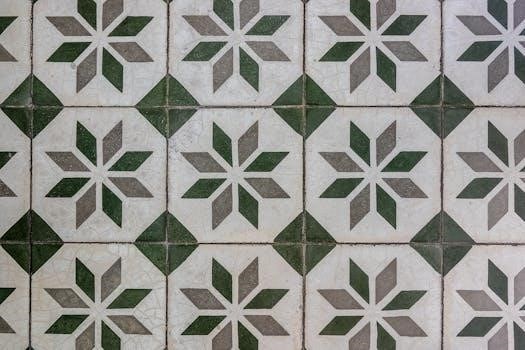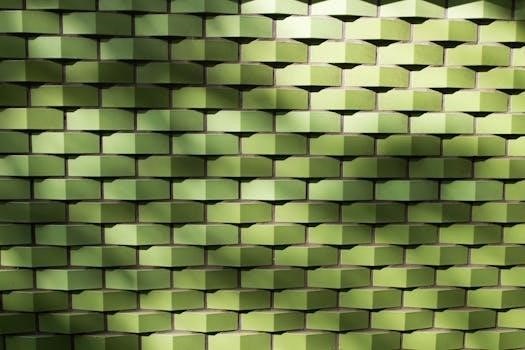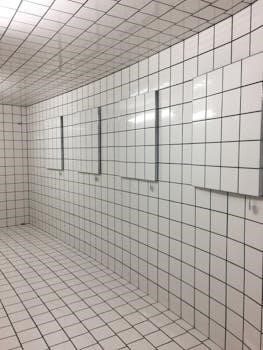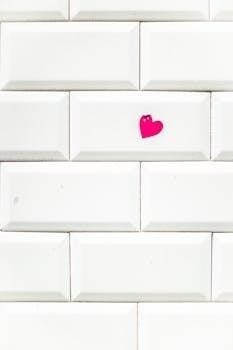What is a 100 Square Grid?
A 100 square grid is a visual tool featuring squares arranged in rows and columns, typically numbered 1 to 100. It’s used in math to help children understand number concepts and patterns.
100 square grids are important for young learners as they provide a visual and tactile way to grasp number sense, counting, sequencing, and basic arithmetic, making abstract concepts concrete.
What is a 100 Square Grid?
A 100 square grid is a fundamental mathematical tool consisting of a 10×10 grid, totaling 100 individual squares. These squares are sequentially numbered from 1 to 100, arranged in rows and columns. Primarily used in early education, this grid serves as a visual aid to introduce children to basic number concepts, counting, and recognizing numerical patterns. It’s a hands-on resource that brings abstract numerical ideas to life, fostering a solid foundation for future mathematical learning through simple visual aids.

Understanding the 100 Square Grid
Importance of 100 Square Grids for Young Learners
100 square grids are vitally important for young learners as they provide a visual representation of numbers, aiding in comprehension of number sequencing and patterns. These grids help children develop a strong number sense, crucial for future mathematical success. By using the grid, young students can easily visualize counting, addition, subtraction, and other basic operations. It serves as a hands-on tool for exploring number relationships, promoting engagement and making math more accessible and enjoyable for early learners in their mathematical journey.

Uses of a Printable 100 Square Grid PDF
Printable 100 square grid PDFs are versatile tools for teaching basic counting, number recognition, and reinforcing the understanding of numerical order from 1 to 100 in an accessible format.
Teaching Counting and Number Recognition
A printable 100 square grid is invaluable for teaching counting and number recognition to young learners. The structured layout, with numbers arranged sequentially, aids children in visualizing number order and sequence. Educators can employ the grid to guide students in counting from 1 to 100, identifying specific numbers, and understanding the relationship between adjacent numbers. Moreover, the grid facilitates activities that involve locating numbers, reinforcing number names, and developing a strong foundational understanding of numerical values. Visual association makes learning more engaging and effective.
Practicing Skip Counting and Number Patterns
Printable 100 square grids are excellent tools for practicing skip counting and identifying number patterns. By shading or coloring specific numbers, students can visually recognize patterns like counting by twos, fives, or tens. This hands-on approach helps learners understand the concept of multiples and develops their ability to predict subsequent numbers in a sequence. Furthermore, the grid allows for exploration of more complex patterns, such as even and odd numbers or sequences involving addition and subtraction, making it easier for students to grasp fundamental mathematical relationships and enhance their pattern recognition skills.
Multiplication and Mathematical Concepts
A 100 square grid PDF is a valuable resource for introducing multiplication and other mathematical concepts. Students can visualize multiplication tables by coloring multiples of a specific number, revealing patterns that make learning multiplication more intuitive. The grid also aids in understanding concepts like prime numbers, composite numbers, and square numbers. By using the grid to identify factors and multiples, learners develop a deeper understanding of number relationships and build a solid foundation for more advanced mathematical operations. Furthermore, it supports visual learning, making abstract ideas more accessible.
Benefits of Using a Physical 100 Square Grid
Using a physical 100 square grid enhances visual learning, making abstract number concepts more concrete and easier to understand for children by providing a tangible representation.
Visual Learning and Understanding
A physical 100 square grid offers a tangible, visual representation of numbers, transforming abstract mathematical concepts into something concrete and easily understandable. This hands-on approach is especially beneficial for young learners who are developing their foundational number sense. By seeing the numbers arranged sequentially, children can quickly grasp concepts like counting, number patterns, and the relationship between numbers. The grid helps visualize addition and subtraction, making learning more intuitive and engaging. Using colors or markers on the grid further enhances understanding and retention, making it a powerful tool for visual learners.
Engaging Learning Activities
A physical 100 square grid can be used to create various engaging learning activities. Children can color in multiples of numbers to explore multiplication tables or use counters to physically represent addition and subtraction problems. Teachers can create puzzle activities by cutting the grid into pieces and having students reassemble it. These hands-on activities promote active learning and deeper understanding of number concepts. Furthermore, using a 100 square grid in games and challenges motivates students to participate and makes learning math fun and interactive. This playful approach builds confidence and reinforces mathematical skills.
Variations of 100 Square Grids
Blank 100 square grids are versatile tools that allow customization for various activities. They can be used for filling in numbers, creating patterns, or designing custom math problems.
Blank 100 Square Grids
A blank 100 square grid is an invaluable resource for educators and parents alike. This variation of the 100 square provides a flexible canvas for numerous learning activities. These grids allow for personalized lessons focusing on number patterns, skip counting exercises, and even creative puzzle designs. Teachers can adapt them for addition, subtraction, or multiplication practice, making them a versatile tool in any curriculum. The absence of pre-filled numbers encourages active engagement and deeper comprehension of mathematical concepts.
Numbered 1-100 Grids
Numbered 1-100 grids are fundamental tools for teaching basic number recognition and sequence to young learners. Each square within the grid is pre-filled with a number from 1 to 100, enabling children to easily identify and understand the order of numbers. These grids can be used for counting exercises, identifying even and odd numbers, and introducing addition and subtraction concepts. Their structured format offers visual support, aiding in comprehension and retention. They are a staple in classrooms and homeschooling environments.
100 square grid puzzles involve cutting up a numbered grid and having learners reassemble it, reinforcing number sequencing and spatial reasoning skills through engaging hands-on practice.
Puzzle Activities
Transform a simple 100 square grid into an engaging puzzle by cutting it into various shapes and sizes. Children can then piece it back together, reinforcing their understanding of number sequencing and spatial relationships. This hands-on activity encourages problem-solving skills and promotes a deeper comprehension of the grid’s structure. Start with larger pieces for younger learners and gradually decrease the size as they become more proficient. Consider creating themed puzzles related to seasons, holidays, or favorite characters to enhance engagement and make learning fun. This fosters critical thinking skills.
Activities and Games with 100 Square Grids
Coloring Activities for Pattern Recognition
Use a 100 square grid to create coloring activities that promote pattern recognition. Assign different colors to specific number sequences, such as multiples of 2, 5, or 10. As children color the squares, they visually identify and reinforce number patterns. This activity enhances their understanding of mathematical relationships and develops visual discrimination skills. Introduce more complex patterns by combining multiples or creating alternating color schemes. This interactive approach makes learning about number patterns engaging and memorable. This activity also helps with fine motor skills.
Numerous websites offer free, printable 100 square grid PDFs. These resources provide various templates suitable for different learning activities, including blank grids and pre-filled numbered grids;

Where to Find Printable 100 Square Grid PDFs
Free Online Resources
Finding free, printable 100 square grid PDFs is easy with many online resources available. Websites dedicated to educational materials often provide these grids for download, typically without cost. These resources may include variations such as numbered grids, blank templates, and themed grids suitable for diverse activities. Teacher resource sites, educational blogs, and printable template websites are great places to start. Look for options that allow unlimited copies for classroom or home use, ensuring accessibility for all learning needs and activities.
Using 100 Square Grids in Different Contexts
In classrooms, 100 square grids enhance learning through counting exercises, pattern recognition, and basic operations. They are versatile tools, aiding visual learners and reinforcing number concepts effectively.
Classroom Activities
100 square grids are invaluable in classrooms for teaching fundamental number skills. Teachers utilize them for activities like counting, skip counting, and identifying number patterns, fostering a strong number sense. The visual nature of the grid supports diverse learning styles, making math more accessible. Students engage in interactive exercises, such as coloring multiples or solving simple addition and subtraction problems directly on the grid. Furthermore, teachers can create puzzle activities or use the grid to introduce multiplication concepts, ensuring a comprehensive learning experience.
Homeschooling Practice
In homeschooling, 100 square grids offer a flexible and engaging tool for math education. Parents use them to reinforce counting, number recognition, and basic arithmetic skills in a tailored learning environment. The printable PDF format allows for unlimited copies, catering to individual learning needs. Activities like skip counting, identifying patterns, and solving simple equations can be easily integrated into daily lessons. The grid also supports visual learning, helping children grasp abstract concepts. Homeschoolers benefit from the hands-on approach, making math more interactive and enjoyable.
Utilizing templates to create 100 square grids allows for customization. Users can adapt grids for specific lessons, focusing on particular number patterns, or highlighting multiplication facts for targeted learning.
Customizing and Creating Your Own 100 Square Grids
Using Templates
Using templates to create custom 100 square grids offers flexibility for educators and parents. Templates allow adaptation for specific learning objectives, like focusing on skip counting or highlighting prime numbers. You can modify the grid’s appearance, font, and color schemes. This enables tailored resources. This customization enhances engagement and understanding. It is possible to design grids that support diverse learning needs, such as visual impairments. This makes math more accessible and enjoyable. These templates can be found in PDF format.

Other Grid-Based Activities
Beyond math, grid-based activities like football squares offer entertainment. A grid is used, and participants buy squares. Numbers are randomly assigned, and winners are determined by the score at the end of each quarter.
Football Squares
Football squares, also known as Super Bowl squares, utilize a 10×10 grid, totaling 100 squares. Participants purchase squares, and numbers 0-9 are randomly assigned to the rows and columns, representing the last digit of each team’s score. Winners are determined based on the square corresponding to the score at the end of each quarter or the final game score. Templates are available online for easy printing and customization for parties.
